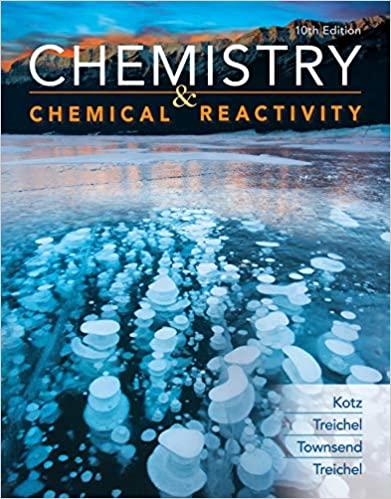The answer in Study Question 95 does not exactly match the value for the bond dissociation enthalpy
Question:
The answer in Study Question 95 does not exactly match the value for the bond dissociation enthalpy of P—Cl in Table 8.8. The reason is that the numbers in the table are averages, derived from data on a number of different compounds. Values calculated from different compounds do vary, sometimes widely. To illustrate this, let’s do another calculation. Next look at the following reaction:![]() The enthalpy of formation of PCl5(g) is −374.9 kJ/ mol. Use this and Δf H° of PCl3(g) to determine the enthalpy change for this reaction. Then, use that value of ΔrH°, along with the bond dissociation enthalpy of Cl2, to calculate the enthalpy change for the formation of a P—Cl bond in this reaction.
The enthalpy of formation of PCl5(g) is −374.9 kJ/ mol. Use this and Δf H° of PCl3(g) to determine the enthalpy change for this reaction. Then, use that value of ΔrH°, along with the bond dissociation enthalpy of Cl2, to calculate the enthalpy change for the formation of a P—Cl bond in this reaction.
Data given in Question 95
White phosphorus exists as P4 molecules with phosphorus atoms at the corners of a tetrahedron.
Data given in Table 8.8

Step by Step Answer:

Chemistry And Chemical Reactivity
ISBN: 9780357001172
10th Edition
Authors: John C. Kotz, Paul M. Treichel, John Townsend, David Treichel





